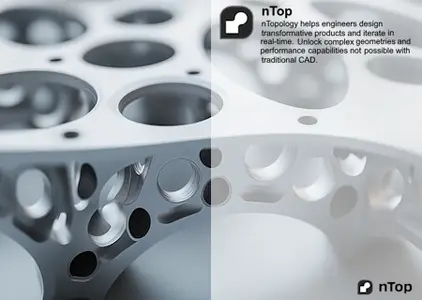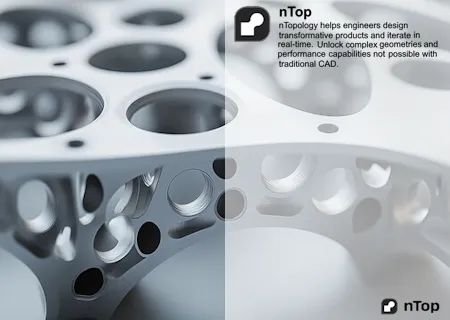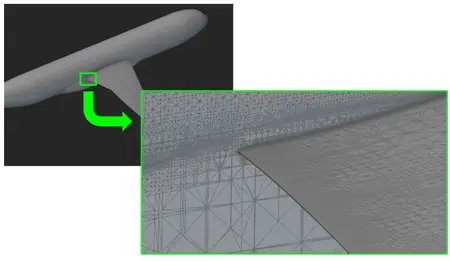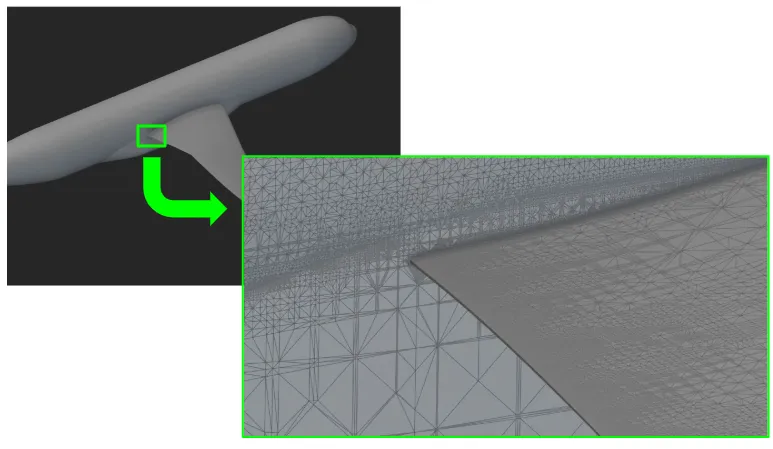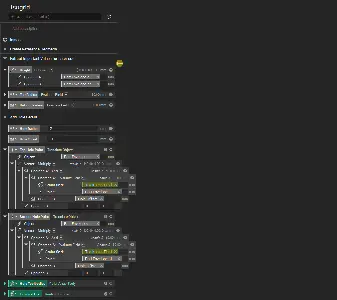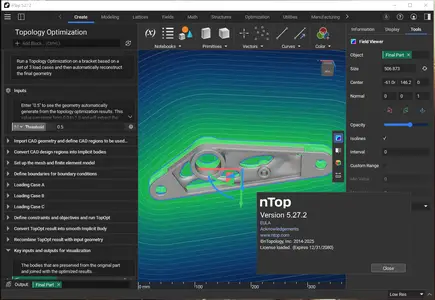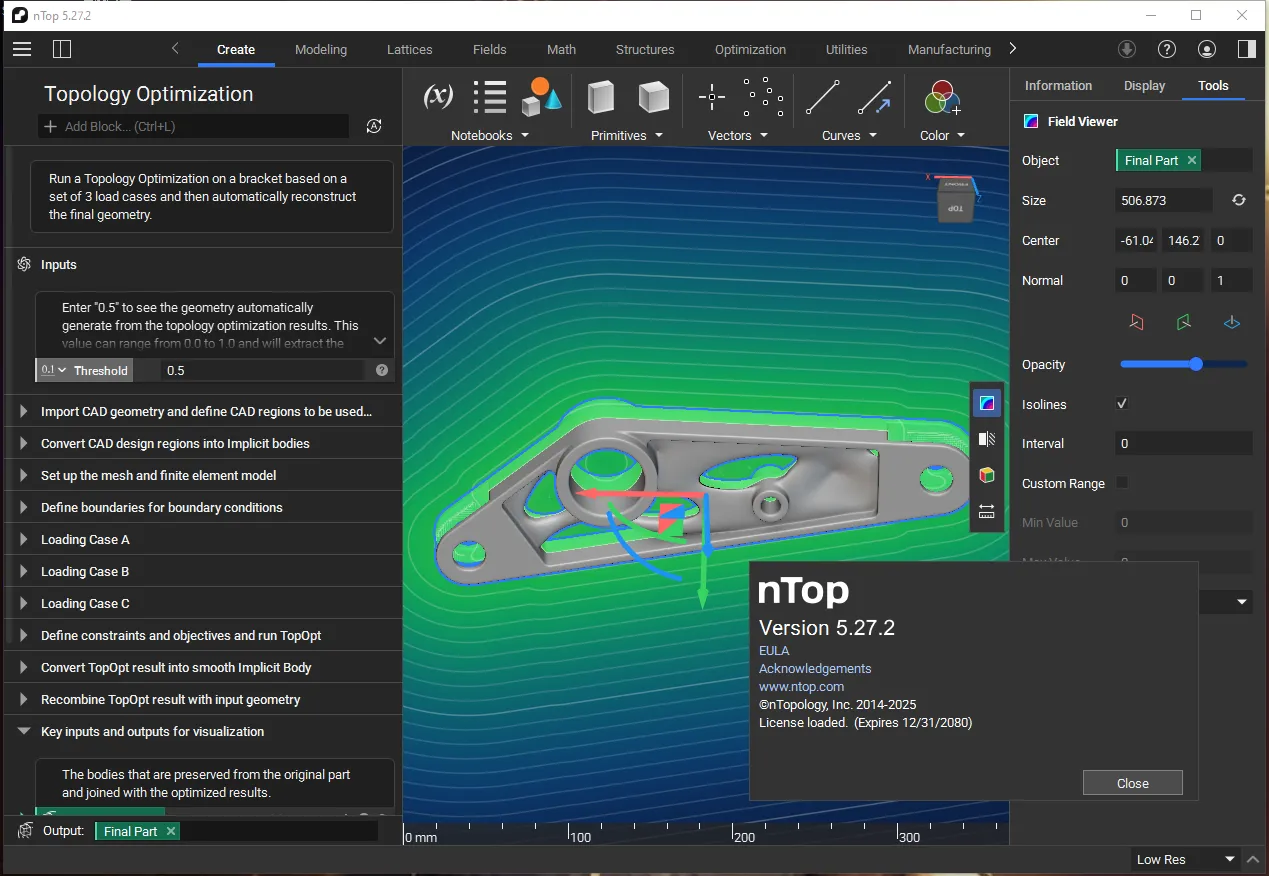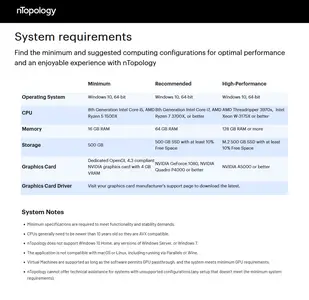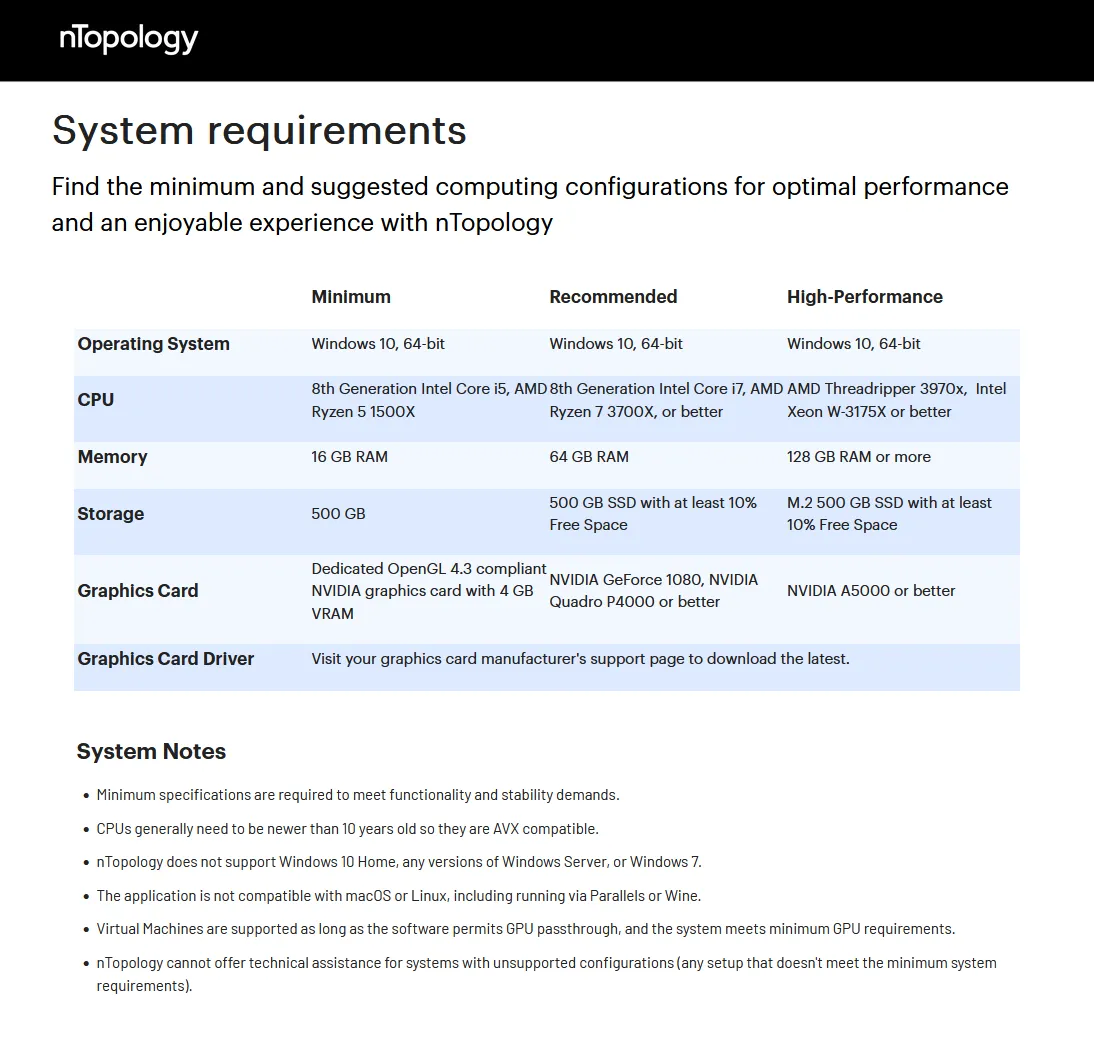nTopology 5.27.2 | 1.4 Gb
nTopology is pleased to announce the availability of nTopology 5.27.2. This release features our new Mesh from Implicit by AT block, which uses an adaptive tessellation algorithm. We have added the ability to resize the notebook as well.
nTop 5.27 - What's New
Mesh from Implicit by AT
- The Mesh from Implicit by AT block generates a mesh from an implicit body input using Adaptive Tessellation.
- Compared to the traditional Mesh from Implicit Body method, Adaptive Tessellation significantly reduces computational and memory overhead, especially when finer tolerances are required, and yields fewer self-intersections.
- The Mesh from Implicit by AT block achieves this by generating large mesh faces in flatter or less complex regions and maintaining small faces where higher fidelity is needed, resulting in a lower overall triangle count.
- Location: Beta > Utilities
- Body: Implicit Body to convert.
- Tolerance: The maximum allowable deviation of the Mesh from the implicit geometry. The resulting mesh will be more precise as this value gets smaller, but the block will take longer to compute.
- Max Edge Length: This variable specifies the largest mesh edge size. Setting this variable too small may prevent filtering out fine features.
- Output: Mesh
UV Field from Surface
- The UV Field from Surface block creates a closest-point UV parameterization vector field from an input CAD face. The output range will be 0 to 1 from edge to edge in the U and V directions.
- Location: Utilities > Conversion
- Surface: Surface to create the implicit body from.
- Tolerance: Tolerance of conversion is determined by the distance of the resultant Implicit Body to the surface of the CAD Body.
- Output: Vector Field
Usage Improvements
- Resizing Notebook: Hover over the right side of the notebook and drag to adjust its width. Double-click to reset the size back to the default.
- Nautical Miles: You can now use Nautical Miles (nmi) as a unit in any numerical input.
. To set this as the notebook unit for length, go to Settings > Units > Metric > Base Units > Length = 'nmi'
- We have updated the domain of streamlines to be hidden by default, with an option to "Show Domain" in the Object Display Settings. This will show the domain at low opacity so the streamlines are legible.
nTopology introduced the concept of implicit modeling for mechanical design, which is an innovative, modern, and scalable way define parts and products. It has many benefits to end-users and companies, such as the elimination of model failures, speed of changes or iterations, and scalability to name a few. But implicit modeling enables so much more. In this informational session, we'll explore a topic that is redefining product development – field-driven design. In short, field-driven design is a way for design, analysis, and manufacturing teams to overlay information into one engineering model. This approach enables orders of magnitude increase in design iteration speed and greatly improves collaboration between teams.
How Field-Driven Design Allows Engineers to Design for Additive Manufacturing
Watch this information session where we'll define field-driven design, show examples of how it enables better knowledge sharing, and show how it promotes the development of more sophisticated, highly engineered products. You'll also better understand how nTopology is addressing today's engineering problems through its nTop Platform product.
nTopology was founded in 2015 to enable engineers and designers to create any geometry — no matter how complex — and meet the requirements of high-performance products.
Owner: nTopology
Product Name: nTopology
Version: 5.27.2
Supported Architectures: x64
Website Home Page : www.ntop.com
Languages Supported: english
System Requirements: Windows *
Size: 1.4 Gb
Please visit my blog
Added by 3% of the overall size of the archive of information for the restoration
No mirrors please
Added by 3% of the overall size of the archive of information for the restoration
No mirrors please


